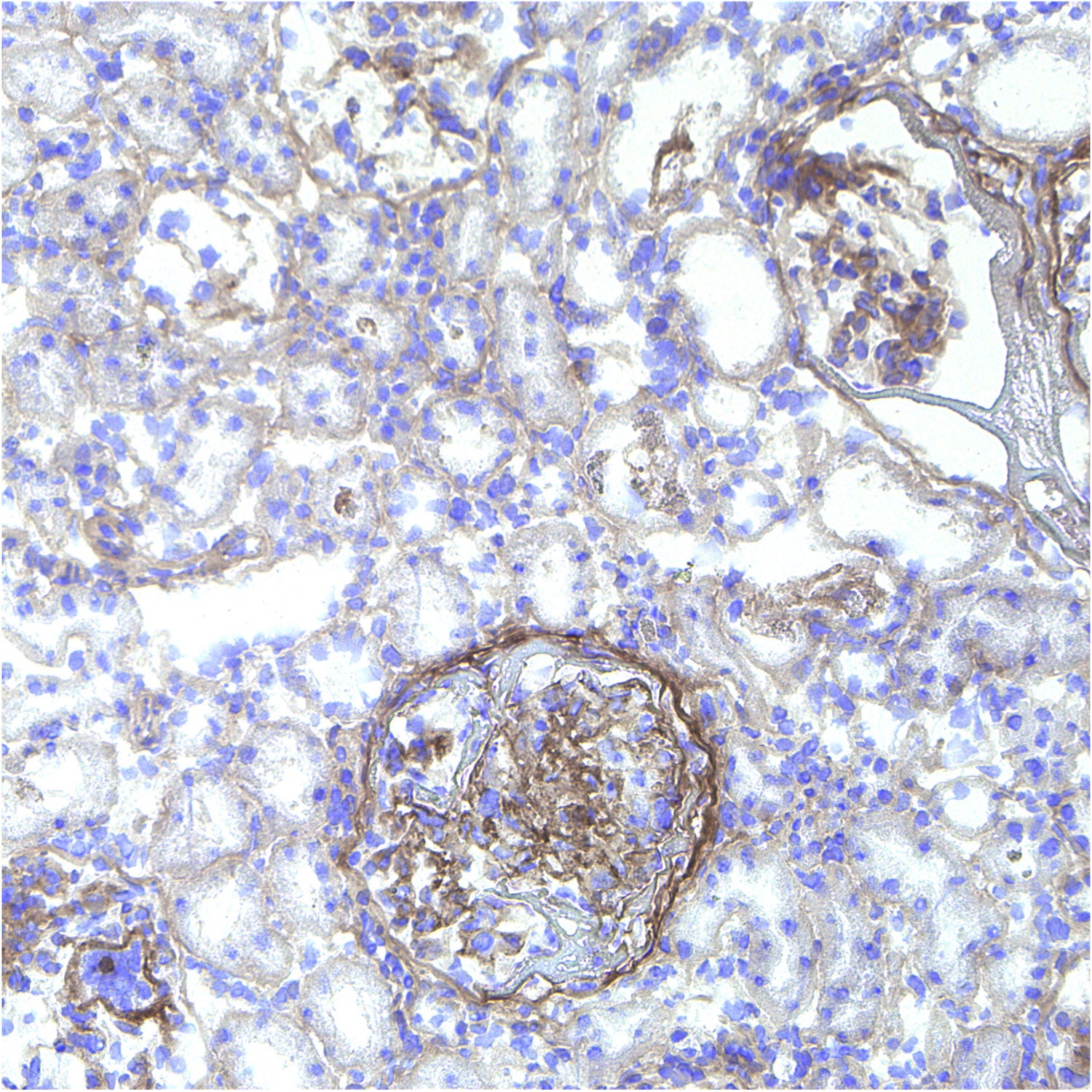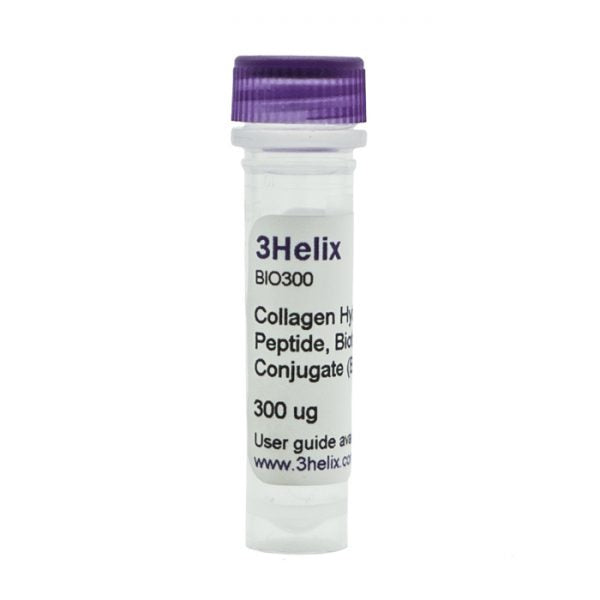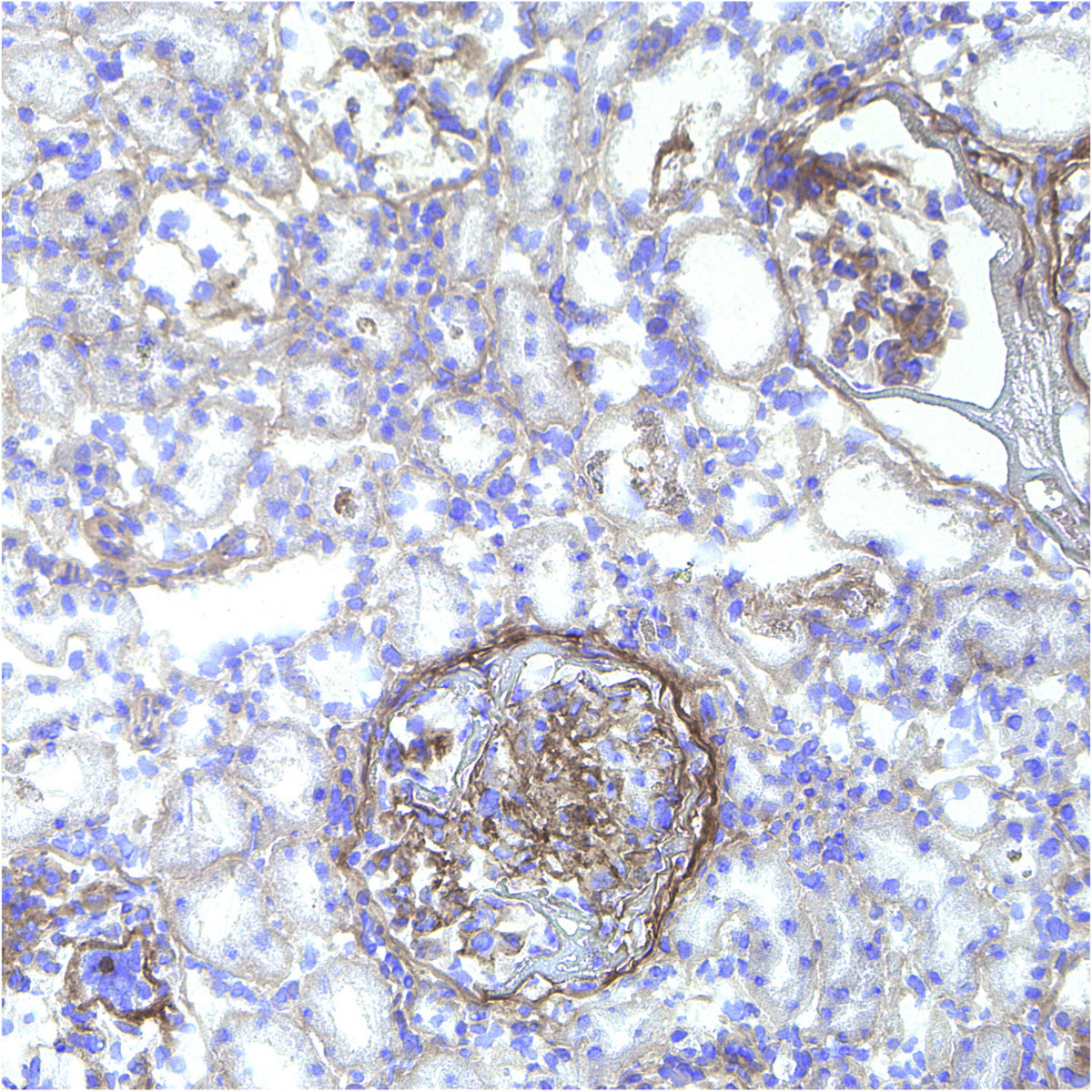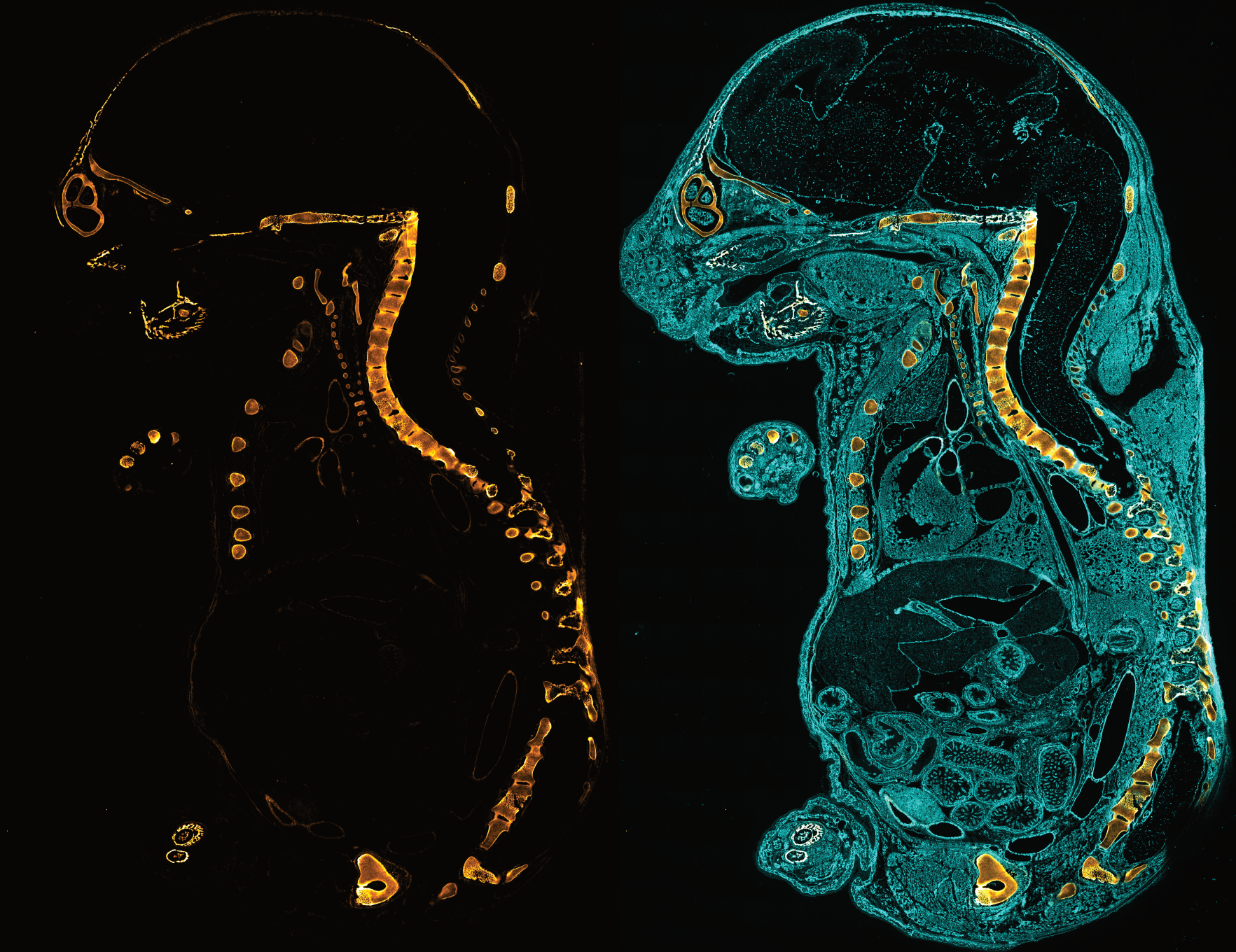B-CHP | Collagen Hybridizing Peptide, Biotin Conjugate
SKU:
BIO300
- $605.00 USD
- $605.00 USD
- Unit price
- per
Subtotal:
$605.00
User Guide with FAQ
xShipping & Returns
xOrder Processing
Please allow 1-2 Business Days to process your order. Expect an email within 2 Business Days to let you know your order is on the way!
LOCAL PICKUP - 675 S Arapeen Drive, Salt Lake City, UT 84108
Orders selected for local pickup can be picked up Monday- Friday, from 9am-4pm. An email will be sent when your order is ready for pickup.
FLAT RATE SHIPPING DOMESTIC & INTERNATIONAL
Orders are generally shipped within 1-2 Business Days using FedEx 2 Day or FedEx International Priority. Flat rate shipping fee of $39 applies to orders shipping to USA. Flat rate shipping fee of $77 applies to orders shipping WORDLWIDE. You may also opt to ‘Use Your Own FedEx Account’ at checkout and shipping will be billed directly to your account.
REFUNDS, RETURNS, AND EXCHANGES
We do not accept returns of any kind.
In the event that your order arrives damaged in any way, please email us as soon as possible at orders@3helix.com with your order number and a photo of the item’s condition. We address these on a case-by-case basis but will try our best to work towards a satisfactory solution.
If you have any further questions, please don't hesitate to contact us at orders@3helix.com.
Citations (35)
x- ACS Nano. 2017 Oct 24;11(10):9825-9835. doi: 10.1021/acsnano.7b03150. Epub 2017 Sep 18.
- J Histochem Cytochem. 2024 Feb;72(2):79-94. doi: 10.1369/00221554231225995. Epub 2024 Jan 24.
- Biomedicines. 2024 Jan 19;12(1):230. doi: 10.3390/biomedicines12010230.
- Caves, Elizabeth Ann. Mechanisms and Functions of Lipodystrophy in Dermal Fibrosis. Diss. Yale University, 2024.
- Nakagawa, K., Nakashima, Y. Pathogenesis of human atheroma necrotic core: degradation of connective tissue fibers and possible involvement of cathepsin K. transl med commun 9, 26 (2024). https://doi.org/10.1186/s41231-024-00188-6
- Lee, Soo Jung et al. “A midposition NOTCH3 truncation in inherited cerebral small vessel disease may affect the protein interactome.” The Journal of biological chemistry vol. 299,1 (2023): 102772. doi:10.1016/j.jbc.2022.102772
- Feng, Xiaotian et al. “Apical expansion of calvarial osteoblasts and suture patency is dependent on graded fibronectin cues.” bioRxiv : the preprint server for biology 2023.01.16.524278. 16 Jan. 2023, doi:10.1101/2023.01.16.524278. Preprint.
- J Biomech. 2023 Apr;151:111546. doi: 10.1016/j.jbiomech.2023.111546. Epub 2023 Mar 15.
- Brown, Anthony et al. “Natural Retinol Analogs Potentiate the Effects of Retinal on Aged and Photodamaged Skin: Results from In Vitro to Clinical Studies.” Dermatology and therapy vol. 13,10 (2023): 2299-2317. doi:10.1007/s13555-023-01004-z
- Polymers (Basel). 2023 Sep 7;15(18):3683. doi: 10.3390/polym15183683.
- Gallate, Zachary S et al. “Galectin-3 and RAGE differentially control advanced glycation endproduct-induced collagen damage in murine intervertebral disc organ culture.” JOR spine vol. 6,2 e1254. 28 Mar. 2023, doi:10.1002/jsp2.1254
- Petrocelli, Jonathan J et al. “Disuse-induced muscle fibrosis, cellular senescence, and senescence-associated secretory phenotype in older adults are alleviated during re-ambulation with metformin pre-treatment.” Aging cell vol. 22,11 (2023): e13936. doi:10.1111/acel.13936
- Hettinger, Zachary R et al. “Mechanotherapy Reprograms Aged Muscle Stromal Cells to Remodel the Extracellular Matrix during Recovery from Disuse.” Function (Oxford, England) vol. 3,3 zqac015. 24 Mar. 2022, doi:10.1093/function/zqac015
- Int J Mol Sci. 2022 Apr 12;23(8):4245. doi: 10.3390/ijms23084245.
- Biomed Opt Express. 2022 Mar 22;13(4):2346-2363. doi: 10.1364/BOE.448286. eCollection 2022 Apr 1.
- Am J Physiol Heart Circ Physiol. 2022 Jul 1;323(1):H165-H175. doi: 10.1152/ajpheart.00148.2022. Epub 2022 Jun 3.
- Gallate, Zachary S. Galectin-3 Mediates Advanced Glycation Endproduct-Induced Collagen Damage in Intervertebral Discs. MS thesis. Icahn School of Medicine at Mount Sinai, 2022.
- Jenkins, Edmund Charles et al. “Age alters the oncogenic trajectory toward luminal mammary tumors that activate unfolded proteins responses.” Aging cell vol. 21,10 (2022): e13665. doi:10.1111/acel.13665
- Aging Cancer. 2022 Jun;3(2):116-129. doi: 10.1002/aac2.12049. Epub 2022 Apr 19.
- Goss, Georgina. Distinct Fibroblast and Pericyte Lineages in Skin Development and Repair. Diss. King's College London, 2022.
- Yu, Dan. Mechanisms and effects of femtosecond laser micromachining in ophthalmic materials and ocular tissue. University of Rochester, 2021.
- Arvind, Varun, Kristen Howell, and Alice H. Huang. "Reprogramming adult tendon healing using regenerative neonatal regulatory T cells." bioRxiv (2021): 2021-05.
- Wang, William Y et al. “Dynamic Endothelial Stalk Cell-Matrix Interactions Regulate Angiogenic Sprout Diameter.” Frontiers in bioengineering and biotechnology vol. 9 620128. 19 Mar. 2021, doi:10.3389/fbioe.2021.620128
- Filiberti, Adrian et al. “An intact complement system dampens cornea inflammation during acute primary HSV-1 infection.” Scientific reports vol. 11,1 10247. 13 May. 2021, doi:10.1038/s41598-021-89818-9
- Zhang, Xiaojie et al. “Hydrolysis of a second Asp-Pro site at the N-terminus of NOTCH3 in inherited vascular dementia.” Scientific reports vol. 11,1 17246. 26 Aug. 2021, doi:10.1038/s41598-021-96679-9
- Viiklepp, Kristina et al. “C1r Upregulates Production of Matrix Metalloproteinase-13 and Promotes Invasion of Cutaneous Squamous Cell Carcinoma.” The Journal of investigative dermatology vol. 142,5 (2022): 1478-1488.e9. doi:10.1016/j.jid.2021.10.008
- Jussila, Anna R et al. “Skin Fibrosis and Recovery Is Dependent on Wnt Activation via DPP4.” The Journal of investigative dermatology vol. 142,6 (2022): 1597-1606.e9. doi:10.1016/j.jid.2021.10.025
- Rognoni, Emanuel et al. “Role of distinct fibroblast lineages and immune cells in dermal repair following UV radiation-induced tissue damage.” eLife vol. 10 e71052. 23 Dec. 2021, doi:10.7554/eLife.71052
- Saini, K., et al. "Heterogeneous strains in tissue collagen show that high strains locally suppress degradation by collagenase." bioRxiv (2021): 2021-02.
- Vagnozzi, Ronald J et al. “An acute immune response underlies the benefit of cardiac stem cell therapy.” Nature vol. 577,7790 (2020): 405-409. doi:10.1038/s41586-019-1802-2
- Filiberti, Adrian et al. “Loss of Osteopontin Expression Reduces HSV-1-Induced Corneal Opacity.” Investigative ophthalmology & visual science vol. 61,10 (2020): 24. doi:10.1167/iovs.61.10.24
- J Orthop Surg Res. 2019 Jun 10;14(1):172. doi: 10.1186/s13018-019-1217-7.
- Rognoni, Emanuel et al. “Fibroblast state switching orchestrates dermal maturation and wound healing.” Molecular systems biology vol. 14,8 e8174. 29 Aug. 2018, doi:10.15252/msb.20178174
- Jin, Hyo-Eon et al. “Collagen mimetic peptide engineered M13 bacteriophage for collagen targeting and imaging in cancer.” Biomaterials vol. 35,33 (2014): 9236-45. doi:10.1016/j.biomaterials.2014.07.044
- J Cell Sci. 2020 Dec 11;133(23):jcs248278. doi: 10.1242/jcs.248278.
- Horn, Lucas A et al. “Remodeling the tumor microenvironment via blockade of LAIR-1 and TGF-β signaling enables PD-L1-mediated tumor eradication.” The Journal of clinical investigation vol. 132,8 (2022): e155148. doi:10.1172/JCI155148
- JOR Spine. 2020 Sep 21;3(4):e1126. doi: 10.1002/jsp2.1126. eCollection 2020 Dec.
Related Products
3Helix
3Helix
3Helix
3Helix
3Helix
3Helix
3Helix
3Helix
3Helix
3Helix
Recently Viewed Products

- Choosing a selection results in a full page refresh.







